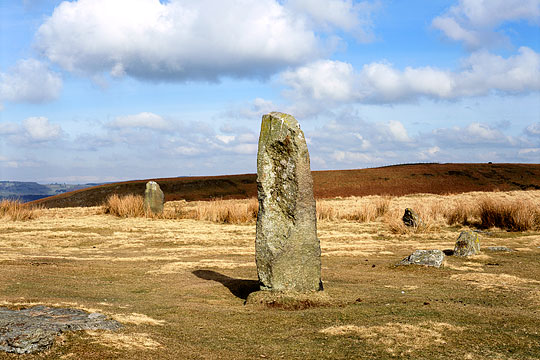History of Mitchell’s Fold Stone Circle
Mitchell’s Fold Stone Circle was constructed in the Bronze Age, over 3,000 years ago, using dolerite stones from nearby Stapeley Hill.

Today there are 15 stones, arranged in a rough circle, but there may once have been as many as 30. Much of this damage is ancient.
The tallest stone was once one of a pair, and these would have formed an impressive entrance into the circle. It is thought that there may also have been a central stone.
We do not fully understand why stone circles were built, but it is clear that they were ritually important for prehistoric people. They may have provided a focus for funerary rites, or perhaps had a calendrical function, with carefully aligned stones marking important lunar or solar events.
Mitchell’s Fold is just one of a remarkable number of prehistoric monuments in the surrounding landscape; there are also two other stone circles, a long barrow and numerous cairns. Nearby was the important Bronze Age axe factory at Cwm Mawr, where distinctive axe-hammers were produced and traded extensively into central Wales and England.
Local Legend
As with many prehistoric sites, Mitchell’s Fold is the subject of legend.
It is said that during a time of famine, a fairy gave a magic cow that provided an endless supply of milk. One night an evil witch milked her into a sieve. When the cow realised the trick, she disappeared. The witch was turned to stone and a circle of stones was erected around her, to ensure that she could not escape.
Further Reading
Burl, A, The Stone Circles of Britain, Ireland and Brittany (New Haven and London, 2000)
Dickens, G, Shropshire Seasons (Shrewsbury, 1993)
Grinsell, L, Mitchell’s Fold Stone Circle and its Folklore (St Peter Port, Guernsey, 1980)


